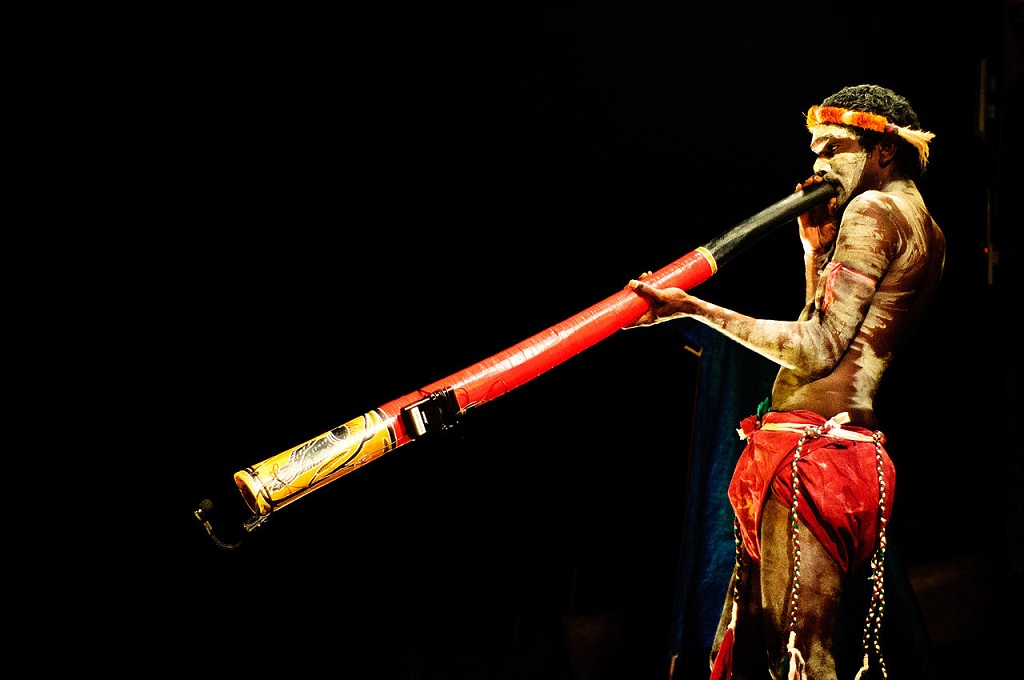
Photo Tomatenpflanze / CC BY-SA / Hole-Fels cave flute
Stone Age Sounds
In 2008, German archaeologists discovered flutes carved from mammoth ivory and vulture's radius in the Hole-Fels cave . Their age was 35-40 thousand years, which made them the oldest musical instruments known to mankind. The flutes are tuned to the major pentatone scale - such a row consists of five notes and does not have semitones. However, it is possible to play "modern" diatonic music on them - one of the paleontologists "armed himself" with a replica of the instrument and played the US anthem.
Photo dalbera / CC BY-SA
 Another landmark find from the Stone Age is a flute from the Divye Babe cave... It is made from the thighbone of a bear, believed to be Neanderthals.
Another landmark find from the Stone Age is a flute from the Divye Babe cave... It is made from the thighbone of a bear, believed to be Neanderthals.
But their creative skills are often questioned , which is why some researchers are convinced that the holes in the bone could have left a predator's teeth.
At the same time, musicologists claim that they are located in accordance with the notes of the diatonic scale, which cannot be accidental. Despite its controversial history, the exhibit is on display at the National Museum of Slovenia.
Ancient flutes still played today
Some ancient musical instruments can be found not only as exhibits in historical museums. They remain an integral part of the culture of the peoples and communities of our time. An example is the longitudinal nai flute , which appeared in Ancient Persia more than 4 thousand years ago , but the peoples of the Caucasus, Western and Central Asia still play it.
The tool is made from thick reeds or reeds, although modern varieties can be made of metal or plastic. Five holes are cut on the front side, and one on the back. The performer puts a thin copper tube on the end of the instrument and uses it to extract music. The range covers sounds from up to the first octave to G sharp second octave.
Another ancient flute, which is still played today, is called the didgeridoo . It appeared in Australia about 40 thousand years ago and is more like a pipe in size. The tool is made from the trunk of a eucalyptus tree after the termites eat away at its core.
The didgeridoo is unique in that it sounds on one note but has a wide tonal range. For this reason, it was used during ceremonial dances and to enter a trance.

Photo by Graham Crumb / CC BY-SA
Since the end of the 20th century, Western musicians such as Sophie Lakaz and Jamiroquai have experimented with didgeridoo . In the early 90s, Irish composer Aphex Twin used the sound of the didgeridoo in the dance composition “ Didgeridoo", Which became a hit on British dance floors.
Today, the musician Yanni Chrysomallis, the founder of the Yanni group, also plays this instrument during live concerts - you can appreciate an example of its performance in this video .
Additional reading in Hi-Fi World:
 Thereminvox: an instrument of the future from the past
Thereminvox: an instrument of the future from the past
 Musical instruments up to the 20th century: magnetic harpsichord and electromechanical piano
Musical instruments up to the 20th century: magnetic harpsichord and electromechanical piano
 Haken's continuum: an electronic instrument with acoustic responsiveness
Haken's continuum: an electronic instrument with acoustic responsiveness
 Most unusual musical instruments: Hammond organ, Vako Orchestron and Synclavier
Most unusual musical instruments: Hammond organ, Vako Orchestron and Synclavier
 Unusual musical instruments: ocarina, panflute, sopilka and glass harmonica
Unusual musical instruments: ocarina, panflute, sopilka and glass harmonica
 What unusual musical instruments are used in the scoring of horror films
What unusual musical instruments are used in the scoring of horror films